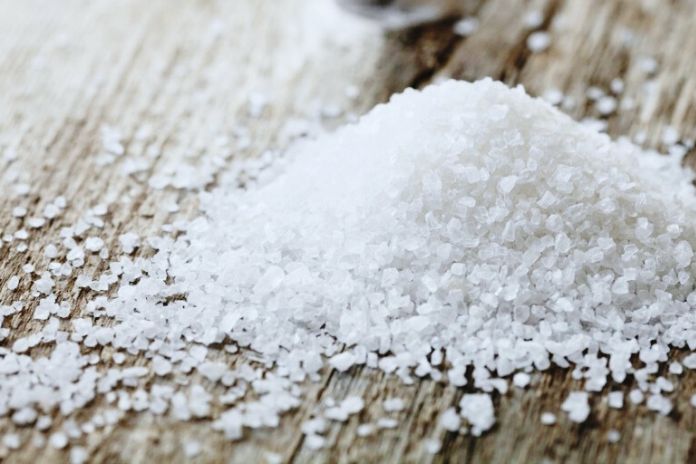We think of our bodies as complex biological machines. However, its mineral component plays a non-negligible role, not only at the most obvious level, which is our skeleton. Focus on mineral salts.
Mineral Salts: Definition
Mineral compounds are chemical elements derived from rocks. They are fundamental for the working of living creatures. A differentiation is made between mineral salts (or full-scale components) in enormous amounts in a life form and minor components in minuscule amounts.
What Is The Role Of Mineral Salts?
They have both a structural role of stiffening the skeleton and the teeth – the carapace or the shell for other living organisms – and are functional by entering into some metabolic processes. The main ones are:
- calcium, _
- sodium, _
- potassium, _
- magnesium, _
- chloride,
- phosphorus _
- sulfur. _
Mineral Salts And The Human Body
In total, they represent between 4 and 5% of the human body’s weight, which is a significant amount: more than 50 mg/kg of our body mass. Calcium is the mineral salt, representing half.
They are involved in the growth and strength of the skeleton and teeth, in the manufacture of proteins, in the regulation of cardiac activity, in blood circulation (vessels and electrolytes) in the maintenance of hair and skin.
The Role Of Mineral Salts In The Body
Mineral Salts: Calcium
Calcium is 99% concentrated in the skeleton and teeth. It is used for mineralization and skeletal structure. This mineral salt also has many biological functions, which are:
- muscle contraction,
- blood clotting,
- hormone release
- enzyme activation.
Calcium requirements are particularly important during growth when bone capital is built up, but also in older people, where aging weakens the bones.
Mineral Salts: Calcium And Vitamin D
Vitamin D is essential for the proper assimilation of calcium by the body, allowing transport through the intestinal mucosa. For lack of vitamin D, calcium is drawn by the body from the bones.
The Main Dietary Sources Of Calcium
Calcium is abundant in the diet. The main sources are dairy, legumes, nuts, cereal, certain leafy vegetables ( cabbage, Swiss chard, spinach, etc.), seafood, and certain mineral waters.
Mineral Salts: Magnesium
Also mainly present in the skeleton, of which it is the other major constituent, magnesium is the mineral salt involved in the regulation of blood pressure, in the immune system (in the production of antibodies), in the acid-base balance body, in muscle relaxation, in motricity and intestinal permeability and energy production.
The Main Food Sources Of Magnesium
Seeds and nuts are the foods richest in magnesium: walnuts, hazelnuts, pistachios, sesame, sunflower, cashews, and pine nuts. Oily fish, seafood, and cocoa are also very good providers of this mineral salt.
Mineral Salts, Potassium
Potassium is the most alkaline of the salts. A true twin of sodium, it enters the body’s acid-base balance and regulates blood pressure.
The Main Dietary Sources Of Potassium
Leafy foods are the best wellsprings of potassium. In any case, seeds, dairy items, lentils, meat, and fish contain it.
Mineral Salts: Sodium
In the human body, sodium is fundamentally tracked down in the blood and the fluids around the cells. Sodium keeps up with typical liquid equilibrium and is critical in nerve and muscle capability.
The Main Food Sources Of Sodium
Non-iodized white salt is found in condiments, olives, cheeses, charcuterie (sausage, chorizo, smoked ham, etc.), broths and soups, and dried or smoked foods. Some mineral waters, especially sparkling waters, are rich in this mineral salt. As well as pizza…
Mineral Salts: Chloride
The a priori great mineral salt chloride is concentrated in the extracellular liquids, in other words, in the interstitial liquid between the cells and the blood. It balances the amounts of water inside and outside the cells. It also plays a role in regulating blood acidity. At the level of the stomach, it enters into the composition of gastric juice.
The Main Dietary Sources Of Chloride
Chloride is present in small amounts in many foods. It is found in the same foods as those containing sodium: deli meats, dried or smoked foods, cheeses, etc.
Mineral Salts: Phosphorus
85% of phosphorus is located in the skeleton, a constituent associated with calcium. But phosphorus is also a constituent of cells, where it is present in their membrane and in the synthesis of DNA (deoxyribonucleic acid). And it is present in the storage and release of energy.
The Main Food Sources Of Phosphorus
Grain products, beans, meat, lentils, and nuts are high in phosphorus.
Mineral Salts: Sulfur
Stored in bones, nails, and hair, sulfur synthesizes two essential amino acids (methionine and cysteine), which enter into the production of keratin, the protein that makes up nails, hair, and skin. In addition, cysteine has an anti-inflammatory role.
The Main Food Sources Of Sulfur
Egg yolk is particularly high in sulfur. Certain meats (including kidneys and liver) are also a good source. Alliaceae (garlic, shallot…) and tap water contain it in the form of sulfates.
The Risks Of Mineral Deficiency
They are present in many foods, especially in plants. A balanced and varied diet provides for this. Nevertheless, factors such as age, sex, pregnancy, state of health, and way of life (sportsman, a student during exam period, etc.) condition the needs.
Symptoms Of A Mineral Deficiency
Certain symptoms (from fatigue and muscle spasms to palpitations and dental problems) may suggest a deficiency. Better to take a medical opinion. Supplementing yourself with food supplements is always questionable because it exposes you to misdiagnosis and merchants of products unsuitable for your health via the internet.
Read Also: Sunflower Oil: A Natural Health And Beauty Asset!
